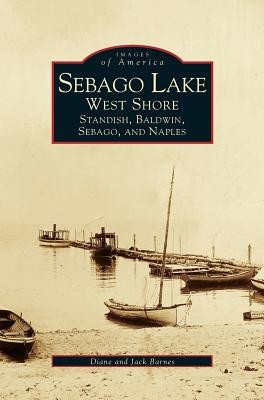
- We will send in 10–14 business days.
- Author: Jack Barnes
- Publisher: Arcadia Publishing Library Editions
- ISBN-10: 1531600980
- ISBN-13: 9781531600983
- Format: 17 x 24.4 x 1 cm, kieti viršeliai
- Language: English
- SAVE -10% with code: EXTRA
Reviews
Description
The four Cumberland County towns--Standish, Baldwin, Sebago, and Naples--along the west shore of Maine's second largest freshwater body of water, Sebago Lake, form the core of the latest work by Diane and Jack Barnes: Sebago Lake: West Shore. Even at a time when the vast hinterland of Maine was plagued by raids from Native Americans allied to the French, intrepid woodsmen and settlers ventured into the rugged, primeval wilderness via the Presumpscot and Saco rivers as far as Standish. But by 1830, the Cumberland & Oxford Canal was completed, and the four towns in this volume and several others in the area were linked to Portland and beyond. For the next 40 years, the area was well served by this 17-mile canal. In 1870, the Portland & Ogdensburg Railroad reached the west shore of Sebago Lake. This gave birth to the colorful steamboat era, invited sportsmen, excursionists, and vacationers to flock to the area, and encouraged many enterprising farmers to open their doors to boarders. Hotels, however, soon replaced many of the boarding houses, and a strong tourism industry had begun in earnest. Through precious old photographs and extensive research, Sebago Lake: West Shore chronicles the time of the earliest settlement of Standish, Baldwin, Sebago, and Naples, to the grand hotel era and more recent times. These pages are replete with common and unfamiliar images that combine to regale the history of the west shore.
EXTRA 10 % discount with code: EXTRA
The promotion ends in 21d.23:53:08
The discount code is valid when purchasing from 10 €. Discounts do not stack.
- Author: Jack Barnes
- Publisher: Arcadia Publishing Library Editions
- ISBN-10: 1531600980
- ISBN-13: 9781531600983
- Format: 17 x 24.4 x 1 cm, kieti viršeliai
- Language: English English
The four Cumberland County towns--Standish, Baldwin, Sebago, and Naples--along the west shore of Maine's second largest freshwater body of water, Sebago Lake, form the core of the latest work by Diane and Jack Barnes: Sebago Lake: West Shore. Even at a time when the vast hinterland of Maine was plagued by raids from Native Americans allied to the French, intrepid woodsmen and settlers ventured into the rugged, primeval wilderness via the Presumpscot and Saco rivers as far as Standish. But by 1830, the Cumberland & Oxford Canal was completed, and the four towns in this volume and several others in the area were linked to Portland and beyond. For the next 40 years, the area was well served by this 17-mile canal. In 1870, the Portland & Ogdensburg Railroad reached the west shore of Sebago Lake. This gave birth to the colorful steamboat era, invited sportsmen, excursionists, and vacationers to flock to the area, and encouraged many enterprising farmers to open their doors to boarders. Hotels, however, soon replaced many of the boarding houses, and a strong tourism industry had begun in earnest. Through precious old photographs and extensive research, Sebago Lake: West Shore chronicles the time of the earliest settlement of Standish, Baldwin, Sebago, and Naples, to the grand hotel era and more recent times. These pages are replete with common and unfamiliar images that combine to regale the history of the west shore.


Reviews